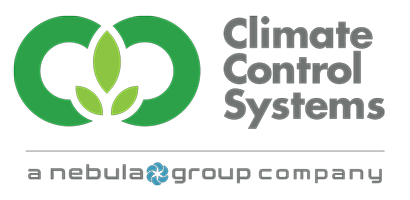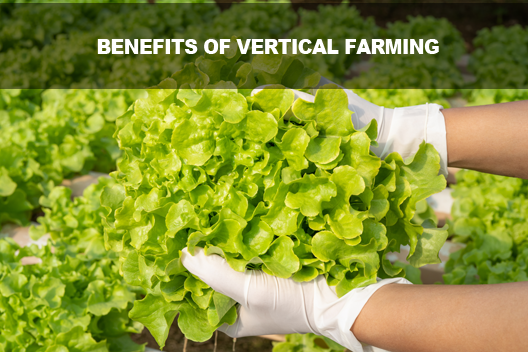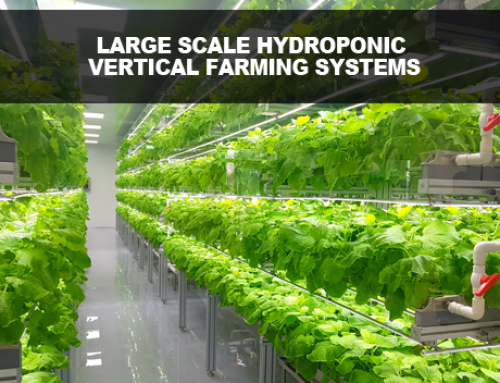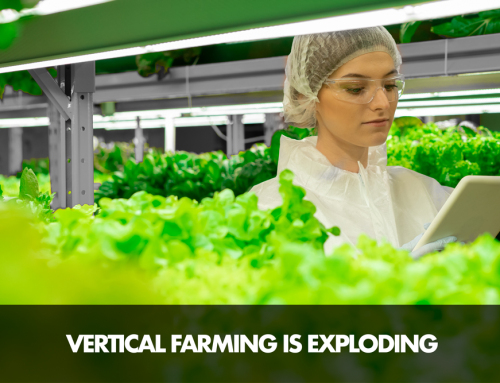Before tackling the benefits of vertical farming, it might be helpful to understand exactly what vertical farming is and how is it different from traditional farming? The vertical farming method is when crops are grown in vertically stacked layers. Vertical farming techniques are usually one of two ways; in a hydroponic vertical farming system (plants are grown using nutrient-enriched water instead of soil) or using the method of an aeroponic systems (plants are sprayed with nutrient-rich water).
There are several benefits of implementing this type of indoor farming method and here is a few worth mentioning.
Consistent Year-Round Crop Production with Vertical Farming
Vertical farming allows you to have a more consistent crop yield since there are fewer adverse effects of the weather. This prevents crop losses or crop damages by having a more controlled and managed environment. Since farmers can depend on having stable crop yields, it allows them to keep up with demand and confirm specific deliveries.
Less Space or Square Footage Required
Outdoor farming can need ample acreage and land to cultivate. However, stacking your crops and implementing a vertical farming system allows upward expansion which means higher productivity in a smaller area. This type of farming system uses 99% less land than an outdoor farm. To put this into perspective and dependent on what type of crops you are growing, one acre of a vertical farm can be equal to upwards of twenty soil-based acres.
The less space benefit is advantageous in areas where land is limited and costly particularly in urban areas. Since fertile soil is not a requirement in a hydroponic farm it allows you to produce healthy food in areas that have challenging climates or poor soil quality.
When thinking of a vertical farm the visual of most is layers going upwards of crop growth. However, another type of vertical farming is referred to as a deep farm and that means going downward. A deep farm is created from refurbishing abandoned shafts or underground tunnels. There are several advantages to going beneath the ground.
- Temperature and humidity are consistently the same, requiring less energy for heating.
- Groundwater can be used which reduces water supply costs.
- The crop yield is up to nine times more than traditional farms.
Reduced Chemical or Pesticide Use
If done correctly farming indoors gives extraordinary crop health to your yields. Pesticides are not necessary since it is a controlled environment providing a natural physical barrier to keep insects out and prevent fungal growth by maintaining a controlled humidity level. This results in plant growth that is healthier and safer for consumers.
Conservation of Resources
Lower water usage and its conservation are one of the main advantages of vertical farming. Depending on which of the vertical farming techniques are utilized, up to as much as 90% less water is used in comparison to traditional farming methods. Imagine implementing vertical farming systems on a larger scale, the freshwater conservation has large potential. These extra water resources could be directed to areas experiencing water shortages.
This method of farming also reduces the usage of fossil fuels. So much consumption is used by farming equipment when sowing and using fertigation equipment.
Reduction of Transportation Costs
Conventional farming requires a large area of land for cultivation and then requires shipping to various cities and other locations. Farms could be within a city or nearby. Shipping from farms to grocery stores is significantly reduced. This affords a city the ability to raise organic crops and climate-regulated seasonal crops that often require long-distance shipping.
There is another advantage that is a byproduct of reducing transportation costs, less food waste. Sadly, produce can become damaged or spoiled before reaching its destination and has to be thrown away.
Very Energy Efficient
While there is the use of LED lighting in vertical farming systems that require a significant amount of energy and power for optimal production, it can also be a source of power and energy. With the advancement of renewable technologies excess energy can be retained and reused in other places within the farm or can be directed back to the national grid.
New Employment Opportunities in Urban Areas
Although the concept is still new, vertical farming continues to see expansion and is being recognized for the advantages it affords. Cities now can offer a new industry to the people living there. Imagine it as a skyscraper farm that is growing food several stories high. Scarce land in urban areas is no longer an issue for farming vegetables and other produce. This would provide fresh food for city dwellers as well as create additional job opportunities.
Contact CCS For Vertical Farming Questions
Vertical farming brings traditional farming into the 21st century. Technology is ever-evolving and is not leaving the farming industry behind. If you are going forward utilizing some of these advanced concepts and want to ensure the best possible yield from your farm, then contact us today. We can help you take your farm to the next level as vertical agriculture is on the rise.



